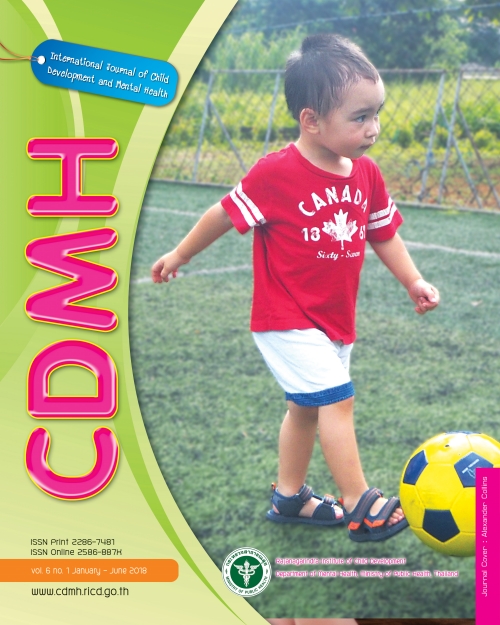Barriers to the Quality of Parent-Adolescent Communication in Thailand: An Ecological System Analysis
Main Article Content
Abstract
Thailand has undergone rapid socioeconomic changes in the past three decades. These changes have been accompanied by an increase in the prevalence of behavioral and mental health problems among Thai adolescents. Some studies have indicated that poor quality of communication between parents and adolescents is associated with an increase in behavioral and mental health problems among Thai adolescents. The socioeconomic changes of the past three decades, such as mothers’ changing roles, adolescents’ increased consumption of technology, parents’ migration for employment, the increase in the number of single parents, divorce, and skipped generation households, may have created a barrier for quality communication between Thai parents and adolescents. In this review paper, we explored published studies from six databases between 2007 and 2017. Using Bronfenbrenner’s ecological system as a framework, we reviewed how Thai socioeconomic changes in the past three decades may influence the quality of communication between Thai parents and adolescents (age range 10-24 years). The approaches to increase and sustain the quality of parent-adolescent communication at microsystem, mesosystem, exosystem, and macrosystem levels are discussed. This review calls for family-oriented researchers to investigate further the impact of these changes on the quality of Thai parent-adolescent communication.
Article Details
![]()
Creative Commons License
This work is licensed under a Creative Commons Attribution-NonCommercial-No Derivatives 4.0 International (CC BY-NC-ND 4.0)
The authors retain copyright and permit the journal the copyright of first publication
Articles, once having passed the review process and accepted for publication in the CDMH Journal, are copyrighted under the CDMH Journal, Department of Mental Health, Ministry of Public Health. Please be aware distribution of CDMH Journal content for commercial purposes without permission is expressly prohibited. However, distribution with intent to educate, advocate, or spread awareness within the general public and research communities is permitted and encouraged with the understanding that the CDMH Journal Editorial Board do not hold jurisdiction or liability for any accompanying comments, text, or information from third parties, either in favor for or against the original article’s assertions, conclusions, methodology, or content.


